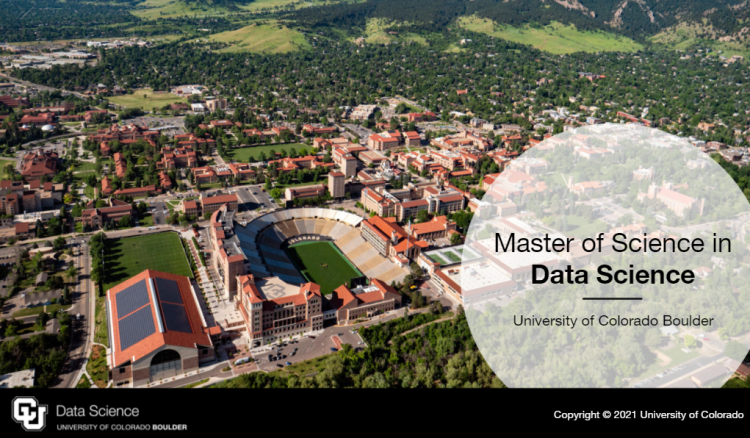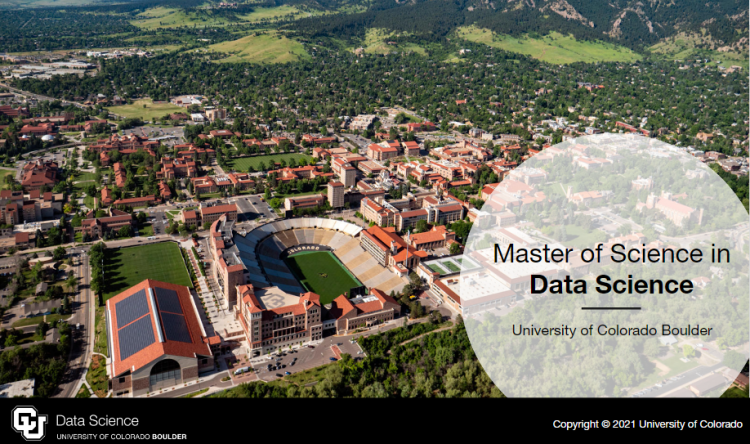How It Works
With performance-based admissions, you can enroll right away into the Master of Science degree in Data Science. No transcripts or applications are required.
To be admitted to the MS-DS as a degree-seeking student, you must enroll in and complete your pathway with a 3.0 GPA or better. Your pathway is a series of 3 one-credit courses with a focus on either statistics or computer science – you choose the pathway that is right for you. The courses in your pathway are part of the required curriculum, so you make direct progress toward your degree as you complete your pathway.
With 6 start dates per year, you can begin pursuing the Master of Science in Data Science whenever you are ready. Courses are 8 weeks long and self-paced, but all for-credit coursework must be submitted by the last day of the 8-week session. See the session calendar for exact dates.
Get started now. To learn more about prerequisite knowledge, earning admission, and enrolling in classes, see Admissions.
Why Choose the MS-DS on Coursera?
- Top-quality learning: Earn the same diploma and learn from the same award-winning faculty as our on-campus program in Boulder. The career-ready curriculum prepares graduates for today's rapidly growing data science field by developing foundational competencies and applied technical skills.
- Engaging academics: Undertake rigorous academics at a leading hub for tech entrepreneurship. This interdisciplinary program is designed for working professionals in the industry and is accredited by the Higher Learning Commision (HLC).
- Flexible path to graduation: Personalize your learning with self-paced classes and multiple term options each year. Pay as you go, with a clear per-credit rate. This fully online program allows you to study at top-40 public university from the comfort of your living room.
- Interactive experience: Connect with course facilitators during weekly office hours and network with classmates in class and on your own Slack workspace. Plus, get access to CU Boulder online resources including libraries, career services, and the Forever Buffs alumni association.
Non-credit vs. For-credit Experiences
There are some important differences between the non-credit and for-credit experience. Please see below for details.
We encourage you to start with a non-credit course so you can preview course content and determine whether you a ready to complete the course within an 8-week for-credit session.
To enroll in the non-credit versions of the MS-DS curriculum, sign up for an account on Coursera, find the course you are interested in, and click the Enroll button to audit the course.
Our non-credit courses offer a different experience than our for-credit courses, including:
- Flexible dates: Dates for non-credit courses are flexible, and these courses are available on-demand.
- Coursera subscription fee: Non-credit courses carry a monthly subscription fee, which you pay directly to Coursera.
- Independent work: Non-credit courses are not supported by faculty or course facilitators.
- Coursera certificates: Students can earn course completion certificates from Coursera for non-credit courses and specializations. This non-credit certificate of completion does not confer transcripted credit from the University of Colorado Boulder, nor can these classes be applied to the degree.
- Saving work off-platform: If you decide to upgrade later, any assignments you complete in the non-credit experience will be automatically applied to your for-credit experience. Due to their interactive nature, discussion board posts and peer-graded assignments may not transfer from session to session when you upgrade. Be sure to save your work outside of the Coursera platform.
- Occasional updates: We occasionally update courses to stay relevant with industry trends and student feedback. Those updates can include adding new elements or changing/removing existing elements that students may have already completed in the non-credit version of the course. We recommend upgrading to the for-credit version of a course soon after completing your non-credit work. This can help avoid extra work due to these types of course updates.
Start directly in a for-credit course or enroll in the non-credit version first to preview course content. You may upgrade from non-credit to for-credit at any time during the enrollment window. See the calendar for exact dates.
Our for-credit courses offer a different experience than our non-credit courses, including:
- Set dates: For-credit courses have session start and end dates. Each session is 8 weeks long. See the calendar for exact dates. All for-credit coursework must be submitted by the last day of the 8-week session, and tuition cannot be carried over to future terms.
- CU tuition: For-credit tuition is paid to the University of Colorado Boulder and Includes access to additional CU services. (e.g. online library and alumni/career services, CU on Coursera membership, and an @colorado.edu email address).
- Academic support: For-credit courses are supported by course facilitators through weekly office hours, discussion forums, and email.
- CU credit: Students receive academic credit for their for-credit courses on a transcript from the University of Colorado Boulder.
- Mandatory onboarding: Prior to accessing for-credit content for the first time, you must pass a short (4–5 hours) non-credit onboarding course. You only need to complete this course once.
- Additional materials: Additional material and assessments must be completed to earn credit; these materials are only available to students who pay tuition.
- Saving work off-platform: Due to their interactive nature, discussion board posts and peer-graded assignments may not transfer from session to session if you drop/withdraw and later re-enroll in a particular class. Be sure to save your work outside of the Coursera platform.
- Recommended course load: We recommend new student take 1 course in their first session. And we encourage continuing students to take no more than 3 courses per session, which is equivalent to a full-time graduate-level course load. For every one credit hour, you will spend approximately 5–8 hours total each week. This includes videos, discussions, readings and assignments. Students who take 3 courses per session complete the degree in about 2 years. You must complete all courses within 8 years.
Program Overview Webinar
Watch our recent webinar to learn about the MS-DS on Coursera program. You’ll hear about performance-based admissions, the interdisciplinary curriculum, and career outcomes for this fully online degree program. (Webinar held October 6, 2021.)

Come From a Non-STEM Background?
Watch our recent webinar to learn about options for students who do not have the pre-requisite skills' (Webinar held September 16, 2022).


